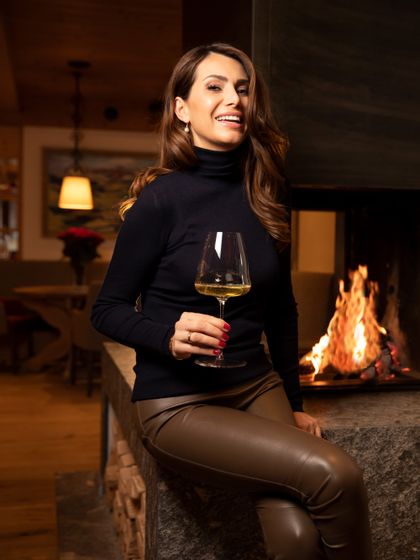Something Special?
Old wines for your guests

In a world that often races forward, there is something enchanting about mindfully savoring the beauty of aged wines. The art of enjoying old wines at special gatherings has an inherent charm that adds a touch of elegance and sophistication to any occasion. Unearthing these bottles from their slumber in cellars allows for an experience like no other, allowing the wine to take us on a sensory journey through time. Accompany us as we examine the exquisite world of aged wines, exploring their unique qualities, how to select the perfect bottles, elevate their presentation, and craft memorable moments for you and your guests.
Selecting the Perfect Wines
Wine types
- Red wines are most often associated with aging potential, but certain whites and champagnes also age gracefully. A wine's aging potential often relates to factors like its acidity, tannins, and residual sugar content.
- Acidic wines typically have a superior aging potential to less acidic wines. This is because a higher acidity level enables the wine to balance out the development of secondary and tertiary flavors as the wine ages. Riesling, Sauvignon Blanc, and Chardonnay are all examples of acidic white wines that can age gracefully, while Champagnes with vibrant acidity can do the same. Consider Pinot Noir or Nebbiolo wines if you're after a more acidic red wine that can age well.
- Wines with higher tannins generally age better than lower-tannin wines, so this trait is most relevant to red wines. Tannins act as preservatives, so while they soften with age, it can aid the aging process to have a good amount of them to start with. For high-tannin red wines with good aging potential, look for your full-bodied options, such as Cabernet Sauvignon, Malbec, and Syrah.
- Certain sweet white wines with higher levels of residual sugar can age beautifully, evolving into even more complex and honeyed expressions. Some notable examples of this include Port, Sherry, and sweet Rieslings.
Elevating Presentation
Like any wine, the job is only done once an aged wine has been properly served for your and your guests' enjoyment. Serving old wines requires finesse in presentation. The following aspects are crucial for enhancing the experience:
- Proper storage. Ensure your aged wines are kept in a dark, cool, and humidity-controlled environment. Doing so preserves their integrity and prevents premature aging.
- Serving temperatures. Temperature plays a significant role in how your wine displays its aromas and flavors. Too warm and our wines can taste overly alcoholic and tannin (imagine aging a wine for decades to soften its tannins, only to undo all that good work!); too cold and its qualities can be dulled. Red wines are generally served at slightly warmer temperatures than whites - read more details in our blog covering the issue in more depth.
- Decanting Techniques. Old wines don't have the same need for maturing through aeration as young wines, but that doesn't mean you shouldn't decant them. As wine ages, sediment can build in the bottle, and decanting is an excellent way to separate this sediment from the wine before drinking. Explore our decanting young and old wines blog for more information on how to approach decanting your aged wines.
- Appealing Wine Display. Presentation is key - and that's where RIEDEL glasses come in. Our crystal, Grape Varietal Specific Glassware enhances the wine's taste and serves as pieces of art on your table. A beautiful wine display can pique your guests' curiosity and set the stage for an exceptional evening.
Crafting Memorable Moments
Serving old wines provides an opportunity to add plenty of intrigue to the evening. Consider adding interactive experiences to engage and entertain your guests. A few options include:
- Wine tastings. Host a wine tasting session where guests can compare and contrast different aged wines. Provide tasting notes and encourage them to share their impressions. It's a fantastic way to deepen everyone's appreciation for the complexity of old wines.
- Blind Tasting. Challenge your guests with a blind tasting. Cover the labels and let them rely solely on their senses to identify the wines. Can they pick out an aged bottle of Burgundy Pinot Noir from a fresher New Zealand bottle?
- Stories and History. With age comes a lot of history and opportunity for fascinating ongoings, so share the stories behind the wines you're serving. Whether it's the winemaker's journey, the vineyard's history, or a notable historical event in the year of the wine's vintage, these narratives can add depth and meaning to the experience.
In the world of wine, serving aged bottles at special gatherings transcends mere drinking; it's a journey through time, a celebration of patience and craftsmanship, and a chance to create lasting memories. As you explore the charms of aged wines, you'll discover that their allure lies not only in their flavor, but in the stories they tell and the experiences they offer. So, the next time you plan a special gathering, consider adding a touch of elegance and sophistication with aged wines and watch as your guests are transported to a world of sensory delight and wonder. Cheers to the art of aging gracefully!
Locations

